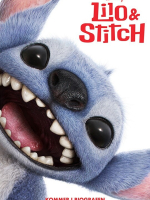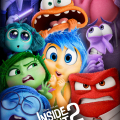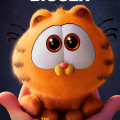Lilo & Stitch 2025
The Cosmic Reboot: Revisiting Lilo & Stitch in Live-Action Form
Walking into “Lilo & Stitch” (2025) feels both impossibly familiar and uncannily novel. As someone who has seen nearly every family-oriented Disney release in theaters since the mid-90s, I’ll admit that the announcement of a live-action/CGI retelling of this beloved tale sparked a swirl of anticipation and anxiety. After all, following the legacy of the 2002 animated original—with its scrappy, indie-flavored charm and irreverent humour—was never going to be simple. But Disney’s 2025 iteration is both a nostalgia trip and a testament to modern technology’s reach, one that attempts to stitch together heart, spectacle, and accessibility in equal measure.
Island Magic and Familiar Bonds Respun
From the very first shot—a vibrant, saturated aerial glide over the lush, sun-drenched Hawaiian archipelago—director Dean Fleischer Camp signals his intent to immerse us in the setting. The island of Kauai isn’t just a backdrop; it’s a living, breathing character. The scents of plumeria, the thrum of ukuleles, the cadence of tide pulling at shorelines—these are rendered with a hyperreal technical flair that’s almost tactile. The CGI enhancement blends seamlessly with on-location cinematography, creating a setting that straddles idealized nostalgia and physical realism.
Lilo Pelekai is played by Maia Kealoha, whose performance anchors the film. She brings an understated vulnerability that belies her youth. Her sorrow at losing her parents is not cartoonish, but raw—giving an emotional charge when compared to her animated predecessor. Lilo’s alienation is palpable as she shuffles through foster care interviews, facing a community that struggles to understand her outbursts and quirks. When she adopts what appears to be an impossibly blue dog from the local shelter, Stitch enters her orbit (this time via a blend of puppetry and state-of-the-art motion capture), and the film’s energy fractures into a high-voltage mix of chaos, pathos, and pure mischief.
Clever Updates and Fresh Challenges
Narrative beats remain largely faithful to Chris Sanders and Dean DeBlois’s original screenplay, but with careful expansion. The relationship dynamics between Lilo and her older sister-turned-reluctant guardian Nani (Auli‘i Cravalho) are given more time to breathe. Their arguments are spun out longer and heavier, weighted by the pressures of social services and the threat of separation—a modern anxiety reflective of evolving conversations about family and care systems. Nani, in this version, occupies a more complex emotional landscape herself; she’s not just a harried adult surrogate, but a young woman making mistakes, searching for her own identity in a world upended by grief and cosmic intervention.
Stitch, meanwhile, is a technical marvel and a genuine acting partner. He’s more textured, his fur matted and wind-tousled, with glowing eyes that glint with intelligence and mischief. Despite the digital perfection, he never escapes his essential weirdness—every bit the “626th” experiment, equally ready to devour Elvis records as to upend Lilo’s sense of normalcy.
Cultural Resonance—And Repercussions
The 2025 retelling is more sensitive to cultural specificity than its predecessor. Hawaiian customs aren’t mere set dressing; they pulse through the dialogue, music, and even the patterns of conflict and reconciliation. This sensitivity is a credit to the film’s expanded consultants and indigenous crew, and while the film never becomes a sociological lecture, the changes feel like genuine acts of care. For instance, Lilo’s explanation of ‘ohana becomes more than a sweet platitude; it’s wrapped around her need for belonging, set against a backdrop of economic hardship, climate anxiety, and the pressures of gentrification—a lightly touched but poignant reality for contemporary Hawaii.
The soundtrack, boasting both classic Elvis tracks and contemporary Hawaiian pop, splashes flavor and authenticity throughout. Musical cues are used judiciously, sometimes offsetting moments of sadness with upbeat acoustic strumming, grounding the cosmic slapstick in something viscerally human.
Comedy and Chaos—Remixed for Modern Audiences
One of the biggest risks “Lilo & Stitch” (2025) takes is its tonal balancing act. The film doubles down on Stitch’s outlandish antics—there’s an early, hilarious chase through a supermarket that’s pure physical comedy and digital wizardry. But the jokes rarely come at the expense of pathos. Lilo’s social ostracization, her impulsivity, and Nani’s desperation for stability provide friction that’s never fully resolved with a laugh or song cue. The film has no trouble lampooning government bureaucrats or alien mismanagement, giving voice to the same anti-authoritarian threads that made the original so subversive in the context of Disney’s otherwise frothy early-2000s roster.
What feels fresh is the script’s deft weaving of modern anxieties with old-school blockbuster magic. Social worker Cobra Bubbles (played with gravelly gravitas by Terry Crews) is both intimidating and oddly paternal, pushing Lilo’s family to prove their worthiness in a system stacked against them. The threat of intergalactic destruction—a contest of authority between Captain Gantu and Stitch’s alien creators—mirrors the local threat of familial rupture, giving stakes that are both cosmic and heartbreakingly close to home.
Visual Achievements and Lingering Shadows
Visually, the 2025 adaptation is a glowing showcase for advances in CGI integration. Stitch’s physicality is unmatched—each ear twitch, every furrowed brow, hints at a burgeoning, if erratic, consciousness. His presence impacts scenes physically: he topples vases, leaves paw prints in wet sand, and his luminous blue contrasts richly with Kauai’s lush greens and golden light. The aliens—particularly Pleakley and Jumba—are resplendently weird, straddling the line between practical creature effects and digital flourish.
Yet, where the film bursts with visual imagination, it occasionally stumbles under the gravity of its own ambition. The pacing is uneven—especially in the third act, where family melodrama collides with big-budget sci-fi set pieces. There’s an unmistakable sense that, in trying to cover emotional depth and spectacle, some scenes lapse into rushed exposition or heavy-handed moralizing. Still, these are minor stumbles for a film that is, at heart, trying to juggle sincere feeling with intergalactic fireworks.
Who Is This For? Audience Access and Modern Sensibilities
With every remake, especially of a cult favourite, the question inevitably becomes: who is this movie really for? Is it meant to welcome in a new generation of streaming-savvy, device-distracted viewers, or to draw nostalgic millennials back to the couch for a family movie night? The answer, surprisingly, is both. Disney’s approach to accessibility—be it via multiple languages, descriptive audio, or early online availability—makes this an easy film to watch at home, stream with friends, and download for long car rides.
There is, as expected, a safe and sensible age rating. “Lilo & Stitch” is given a PG (Parental Guidance) classification, not for any particular darkness, but for the reality of familial separation and some moments of mild peril. Families searching for a free, online option will likely find themselves limited, but the film’s presence across most major platforms ensures a wide audience reach, particularly as part of the current push to make Disney’s back-catalogue as unblocked and portable as possible.
Final Thoughts: Old Soul, New Tricks
Ultimately, “Lilo & Stitch” (2025) succeeds because it refuses to simply coast on nostalgia or effects-driven spectacle. It’s a warmer, messier film than many of its live-action reboot siblings, not afraid to show its seams—family dynamics are bumpy, jokes sometimes fall flat, and the visual splendor never quite smooths over the raw ache at the film’s core. For viewers accustomed to polished, conflict-free kids’ movies, this might feel jarring. But for audiences who want to be reminded that children’s films can confront loss, difference, and reconciliation as more than a fairy tale footnote, this adaptation lands with surprising resonance.
If you’re weighing whether to watch, stream, or download it, “Lilo & Stitch” (2025) is worth your night in—not simply to revisit the story you know, but to see it reframed for a generation looking for connection across screens, cultures, and even galaxies.
How to watch Lilo & Stitch (2025) online
Lilo & Stitch (2025) is currently available to watch online via Disney+, where subscribers can stream in HD, download for offline viewing, and access bonus content. The film is not currently offered as a free title, but new users can enjoy it during Disney+'s free trial period if available in your region. For those preferring other platforms, it is available for digital rental and purchase on Amazon Prime Video, Apple TV, and YouTube (Movies). Download options are accessible within those apps for offline playback. Lilo & Stitch is not currently on Netflix or Peacock, and Hulu hosts it only for select regions, primarily as a premium-on-demand selection. Hulu's download feature depends on your subscription tier. The film carries a PG age rating, which means it’s generally suitable for children, though some material may require parental guidance.
Pros:
- Engages with Hawaii’s culture respectfully and deeply
- Stellar performances, especially from Maia Kealoha and Auli‘i Cravalho
- Impressive CGI effects make Stitch a believable presence
- Expanded family dynamics add emotional realism
- Strong soundtrack blending classic and contemporary Hawaiian music
- Balancing humor with pathos gives the movie a distinct, resonant feel
- Accessible on a wide variety of streaming platforms
- Available for download and offline viewing in high quality
- Family-friendly age rating (PG), suitable for all but the youngest viewers
- Familiar story refreshed with modern themes and visual flair
Cons:
- Occasional pacing issues, especially in the third act
- Some scenes slip into heavy-handed messaging
- Visual spectacle can overshadow smaller emotional beats
- Free online streaming options may be limited by platform restrictions
- Alien side characters occasionally feel underdeveloped
- Longer runtime may test the patience of younger kids
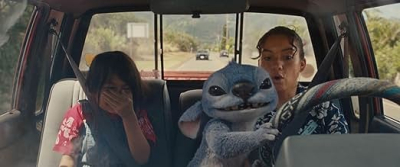
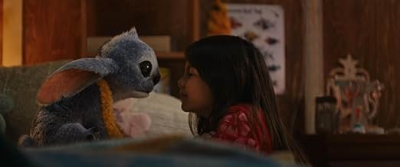
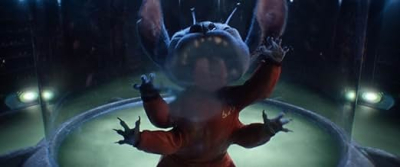
To download the app, you will get links to the Official Website and/or official digital markets.

